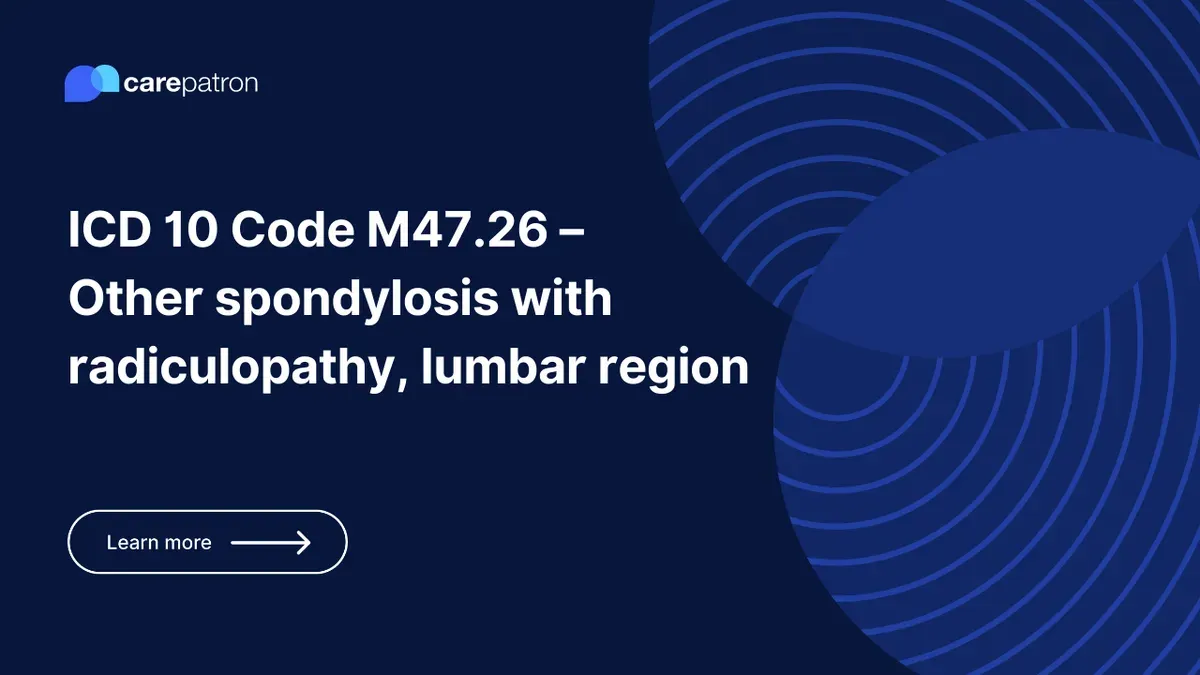
M47.26 – Other Spondylosis With Radiculopathy, Lumbar Region
In this comprehensive guide, learn about the diagnosis, billability, clinical info, and more for M47.26 - Other Spondylosis With Radiculopathy, Lumbar Region.
Use Code
Commonly asked questions
While it may not be possible to completely prevent spondylosis, lifestyle modifications such as maintaining good posture, regular exercise, weight management, and avoiding excessive strain on the spine can help reduce the risk and progression of spondylosis-related radiculopathy.
Treatment for M47.26 typically involves a combination of non-surgical approaches such as physical therapy, pain management techniques, anti-inflammatory medications, and assistive devices. In some cases, surgical interventions may be considered if conservative measures do not provide sufficient relief or if there is severe nerve compression.
The recovery time for spondylosis with radiculopathy in the lumbar region can vary depending on the severity of the condition, the individual's overall health, and the chosen treatment approach. Mild cases may improve with conservative management within a few weeks to months, while more severe cases or those requiring surgery may have a more extended recovery period.
EHR and practice management software
Get started for free
*No credit card required
Free
$0/usd
Unlimited clients
Telehealth
1GB of storage
Client portal text
Automated billing and online payments
